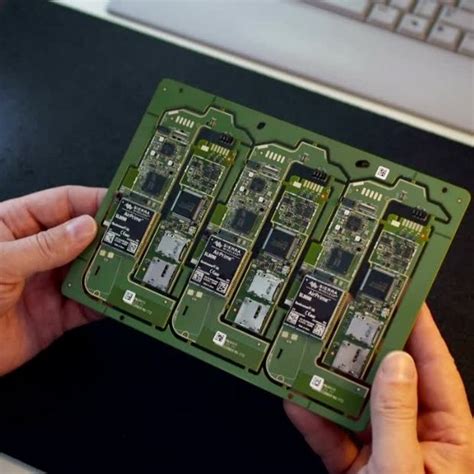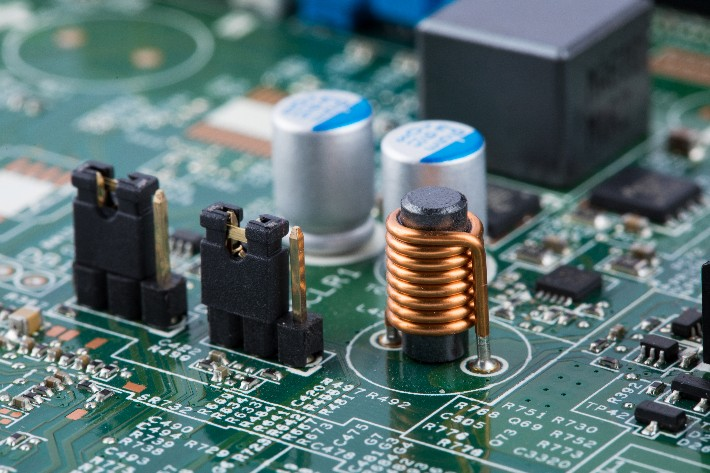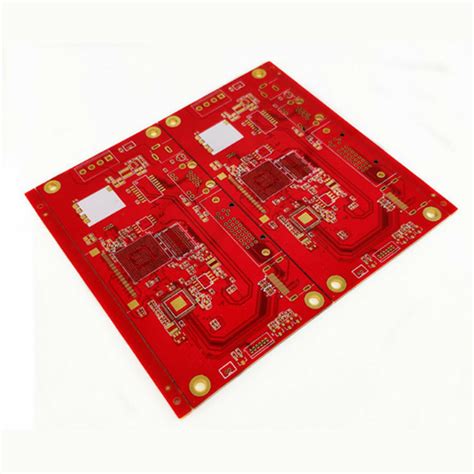Global Leaders in Large-Scale PCB Manufacturing Solutions

Key Takeaways
When evaluating PCB manufacturing partners, understanding core competencies separates industry leaders from average providers. You’ll want to prioritize PCB manufacturing companies with proven expertise in handling oversized or high-layer-count designs, as these demand specialized equipment and process controls. Scalability becomes critical here—look for facilities capable of managing both prototyping and mass production without compromising turnaround times.
Tip: Always verify certifications like ISO 13485 or IATF 16949 to ensure compliance with industry-specific quality standards, especially for medical or automotive applications.
The PCB manufacturing cost structure often hinges on material selection, panel utilization rates, and finishing techniques. For large-scale projects, optimizing panel layouts can reduce waste and lower per-unit expenses. Reputable PCB manufacturing business operators transparently break down these variables, helping you balance budget constraints with performance requirements.
Emerging trends, such as additive manufacturing or embedded component technology, are reshaping how complex boards are produced. Industry standards and certifications play a pivotal role here, ensuring reliability even in mission-critical environments. By aligning your project’s technical demands with a manufacturer’s capabilities, you mitigate risks while achieving consistent quality across production runs.

Large-Scale PCB Manufacturing Technologies Unveiled
When exploring PCB manufacturing for industrial applications, understanding the technologies behind large-scale production becomes critical. Modern PCB manufacturing companies leverage automated optical inspection (AOI) and laser direct imaging (LDI) to ensure precision in high-volume runs. These systems minimize errors in oversized boards, which are prone to warping or layer misalignment. Advanced sequential lamination techniques allow for stacking multiple layers without compromising signal integrity—a necessity for complex designs in aerospace or automotive industries.
To manage PCB manufacturing cost, factories deploy panelization strategies, optimizing material usage by grouping smaller boards into standardized panels. This reduces waste while maintaining throughput. Additionally, predictive maintenance tools powered by IoT sensors monitor equipment health, preventing downtime in 24/7 production environments.
For your PCB manufacturing business, adopting high-density interconnect (HDI) technologies ensures compatibility with miniaturized components, even in large-format boards. Leading manufacturers combine these innovations with rigorous thermal management protocols, using materials like polyimide or ceramic-filled substrates to withstand extreme operating conditions. By aligning with partners skilled in design for manufacturability (DFM), you avoid costly redesigns and accelerate time-to-market for mission-critical projects.
Custom Solutions for Oversized Circuit Board Projects
When tackling PCB manufacturing for oversized or complex designs, you need partners who combine engineering expertise with specialized infrastructure. Leading PCB manufacturing companies address challenges like material warping, thermal management, and signal integrity by tailoring solutions to your project’s scale. For example, high-precision laser drilling ensures accuracy in multilayer boards, while custom panelization optimizes material usage to reduce PCB manufacturing cost.
| Consideration | Standard PCBs | Oversized PCBs |
|---|---|---|
| Design Flexibility | Limited by panel size | Custom panel layouts |
| Material Selection | FR-4 standard | High-Tg, metal-core options |
| Production Lead Time | 5-7 days | 10-15 days (complex setups) |
| Cost Drivers | Volume-based | Engineering labor, tooling |
This approach ensures your PCB manufacturing business or R&D project isn’t constrained by conventional limits. Advanced firms deploy automated optical inspection (AOI) and impedance testing to maintain quality across large boards, even when integrating mixed materials or irregular shapes. By aligning with specialists, you gain access to scalable workflows that balance technical requirements with budget realities—critical for prototypes and industrial-grade production alike.
Global Leaders in Industrial PCB Fabrication
When selecting partners for PCB manufacturing at scale, you need suppliers capable of balancing precision with high-volume output. Leading PCB manufacturing companies distinguish themselves through vertically integrated facilities, combining advanced automation with specialized expertise in handling oversized or multi-layered designs. These firms often operate ISO-certified production lines, ensuring consistency even when managing complex projects like industrial control systems or aerospace-grade boards.
A critical factor is their ability to optimize PCB manufacturing cost without compromising quality. Top-tier providers leverage economies of scale, bulk material sourcing, and energy-efficient processes to reduce per-unit expenses. For example, some utilize laser direct imaging (LDI) technology to minimize material waste in large panels, while others deploy AI-driven quality control systems to slash defect rates.
The PCB manufacturing business also thrives on adaptability. Global leaders offer flexible prototyping-to-production workflows, allowing you to test designs before committing to full-scale fabrication. This is particularly valuable for industries requiring customizations, such as automotive or renewable energy sectors, where board dimensions and thermal performance demands vary widely.
Ultimately, partnering with industrial-scale experts ensures access to cutting-edge techniques like high-density interconnect (HDI) or embedded component technology—key for staying competitive in markets where reliability and miniaturization coexist. By aligning with these innovators, you secure not just production capacity, but strategic advantages in speed, scalability, and technical support.
Advanced PCB Production Techniques Explored
When navigating PCB manufacturing for large-scale projects, understanding the advanced techniques leveraged by top-tier PCB manufacturing companies becomes critical. Modern facilities employ automated optical inspection (AOI) systems paired with high-precision laser drilling to ensure micron-level accuracy in multi-layered designs. These methods not only enhance reliability but also optimize PCB manufacturing cost by minimizing material waste through AI-driven panelization algorithms.
For oversized or complex boards, sequential lamination processes allow manufacturers to build intricate layer stacks while maintaining signal integrity—a necessity for applications like aerospace or industrial automation. Advanced PCB manufacturing business operators also utilize direct imaging (DI) technology to bypass traditional photomasks, accelerating prototyping cycles by up to 40%. This agility is particularly valuable when balancing tight deadlines with the demands of high-volume production.
Beyond hardware, simulation-driven design validation tools enable engineers to predict thermal and mechanical stresses before fabrication, reducing costly iterations. By integrating these innovations, leading PCB manufacturing companies ensure scalability without compromising on performance—a decisive factor when selecting partners for mission-critical projects.

Choosing High-Capacity PCB Manufacturing Partners
When selecting partners for large-scale PCB manufacturing, you’ll want to prioritize PCB manufacturing companies with proven expertise in handling oversized or complex projects. Start by evaluating their technical capabilities—advanced equipment like laser direct imaging (LDI) systems and automated optical inspection (AOI) ensures precision in high-volume production. Equally critical is their ability to balance PCB manufacturing cost with quality, especially when scaling from prototypes to mass production.
Look for suppliers offering flexible material sourcing and multi-layer fabrication expertise, as these factors directly impact reliability in demanding applications. Transparent communication about lead times, minimum order quantities (MOQs), and compliance certifications (e.g., ISO 9001, IATF 16949) can help align expectations. For businesses focused on long-term growth, partnering with a PCB manufacturing business that invests in R&D for emerging technologies—like high-speed or thermal management solutions—ensures future-ready scalability.
Finally, assess their track record in mitigating risks such as supply chain disruptions or design flaws. A partner with robust quality control protocols and data-driven process optimization minimizes costly delays, making them a strategic asset for industrial-scale projects.
Innovations in Large-Format PCB Design & Assembly
When tackling large-scale PCB manufacturing projects, you need partners who push the boundaries of design and assembly. Modern PCB manufacturing companies now leverage modular design frameworks to break down oversized boards into manageable segments, reducing PCB manufacturing cost while maintaining signal integrity. Advanced materials like high-Tg laminates and low-loss substrates are paired with laser-direct imaging (LDI) to achieve micron-level precision, even for panels exceeding 60" in length.
For assembly, robotic placement systems equipped with machine vision ensure components align perfectly across expansive layouts, minimizing thermal stress during reflow. Innovations like embedded passive components and hybrid rigid-flex designs further optimize space, critical for applications like industrial automation or renewable energy systems.
To stay competitive in the PCB manufacturing business, leading providers integrate AI-driven simulation tools that predict mechanical strain and thermal expansion risks upfront. This proactive approach slashes prototyping cycles by up to 40%, allowing faster scaling from design validation to full production. When selecting partners, prioritize those offering design-for-manufacturability (DFM) analysis tailored to large formats—this ensures your project balances performance, durability, and cost efficiency without compromise.
Key Benefits of Industrial-Scale PCB Production
When partnering with PCB manufacturing companies specializing in industrial-scale operations, you gain access to economies of scale that directly reduce PCB manufacturing cost per unit. High-volume production lines optimize material usage and minimize waste, ensuring competitive pricing without compromising quality. Advanced automation in PCB manufacturing ensures consistent precision across thousands of boards, critical for applications requiring tight tolerances, such as aerospace or medical devices.
Industrial-scale facilities also streamline timelines, enabling faster turnaround for large orders—a decisive advantage when managing tight project deadlines. Their expertise in handling complex multilayer designs and high-density interconnects reduces risks of defects, which can escalate expenses in smaller-scale PCB manufacturing business models. Additionally, bulk procurement agreements with material suppliers further lower costs, while robust quality assurance protocols ensure compliance with international standards.
By leveraging specialized equipment like laser direct imaging and automated optical inspection, these manufacturers maintain reliability even for oversized or unusually shaped boards. This scalability ensures your projects benefit from both technical sophistication and cost predictability, making industrial-scale PCB manufacturing a strategic choice for long-term partnerships.
Expertise in Complex PCB Manufacturing Processes
When dealing with intricate PCB manufacturing requirements, you need partners who master advanced techniques to balance precision and scalability. Leading PCB manufacturing companies leverage automated optical inspection (AOI) and laser direct imaging (LDI) to maintain accuracy across multi-layer designs, high-density interconnects, and rigid-flex configurations. These technologies ensure consistent quality even when producing oversized boards or managing tight tolerances—critical factors that influence PCB manufacturing cost and project timelines.
Specialized expertise becomes vital when addressing challenges like thermal management in high-power applications or signal integrity in high-frequency circuits. Reputable providers optimize material selection—from low-loss substrates to heavy copper layers—to meet performance demands without compromising durability. They also implement design for manufacturability (DFM) checks early in the process, reducing revisions and minimizing waste—a strategic advantage for scaling your PCB manufacturing business.
By collaborating with firms experienced in complex workflows, you gain access to tailored solutions that align with industry standards like IPC Class 3, ensuring reliability for aerospace, automotive, or industrial applications. This technical proficiency, combined with transparent cost structures, positions you to navigate both technical and economic challenges in large-scale production.
Conclusion
When selecting partners for pcb manufacturing at scale, you must prioritize technical expertise and operational capacity. Leading pcb manufacturing companies differentiate themselves through advanced fabrication technologies, streamlined workflows, and cost-optimized production models tailored for oversized or complex designs. While pcb manufacturing cost remains a critical factor, it’s essential to balance pricing with quality assurance, particularly for industrial-grade applications requiring precision and reliability.
The most competitive providers in the pcb manufacturing business invest in automation, material innovation, and rigorous testing protocols to minimize defects and ensure consistent output. By aligning your project requirements with manufacturers specializing in high-volume capabilities, you gain access to scalable solutions that adapt to evolving technical demands—from multilayer designs to high-frequency signal integrity.
Ultimately, success in large-scale PCB projects hinges on collaborative partnerships. Verify certifications, review case studies, and assess supply chain resilience to identify partners capable of delivering both technical excellence and long-term value across your production lifecycle.
FAQs
What defines a reliable large-scale PCB manufacturing partner?
Look for PCB manufacturing companies with proven expertise in handling oversized boards and high-volume production. Certifications like ISO 9001 and IPC Class 3 standards indicate adherence to quality benchmarks, while advanced machinery ensures precision for complex designs.
How does PCB manufacturing cost vary for industrial-scale projects?
Costs depend on factors like material selection, layer count, and production volume. While bulk orders often reduce per-unit expenses, specialized requirements (e.g., high-frequency materials or ultra-thick copper) may increase PCB manufacturing business expenses. Transparent suppliers provide detailed quotes upfront.
Can PCB manufacturing processes accommodate custom designs?
Yes, leading manufacturers offer tailored solutions for unconventional board sizes or mixed-technology assemblies. Discuss your project’s technical specs early to leverage design-for-manufacturability (DFM) feedback, optimizing both performance and PCB manufacturing cost.
What innovations are shaping industrial PCB fabrication today?
Automated optical inspection (AOI), laser direct imaging (LDI), and additive manufacturing enable faster prototyping and tighter tolerances. These advancements help PCB manufacturing companies deliver high-reliability boards for aerospace, automotive, and energy sectors.
Ready to Start Your Large-Scale PCB Project?
For tailored solutions from industry-leading experts, please click here to connect with Andwin PCB. Their team specializes in balancing technical complexity with cost-effective PCB manufacturing for industrial applications.







